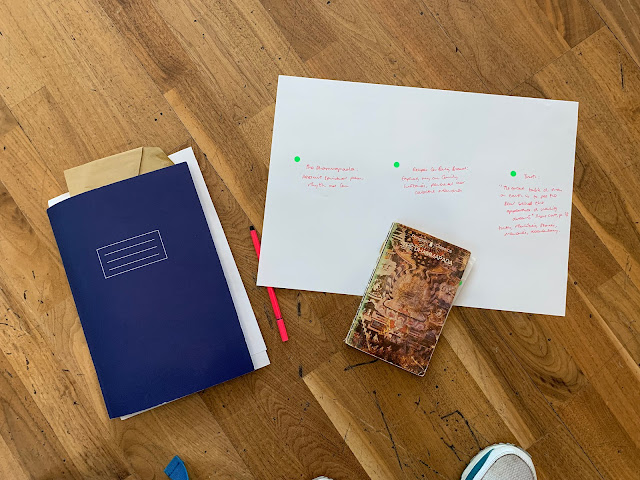Today I have been standing in solidarity with Ukraine.
I took part in a CND campaign organised by West
Yorkshire CND. This was CND piggybacking an existing
campaign for SOS NHS. CND’s campaign is Nurses
Not Nukes to encourage spending on NHS rather than
nuclear weapons. My campaign is piggybacking on
CND’s work. My slogan for my banner reads
Слава Україні. This translates as Glory to Ukraine.
This is about me declaring my support and
solidarity with Ukrainian justice, freedom. This is
about protecting a country, its national identity,
its people, its physical locations, geographies,
maps, borders and boundaries. This is also about
freedom of speech. It is about Ukraine as a rich,
cultural, independent state. It is about my work,
it is about Holodomor, it is about raising
awareness of Soviet relationships with Ukraine
throughout history, it is about everything I believe
and stand for and I have learnt in my work and my
research, about Ukraine, about the people I meet
and work with. It is about me contributing my
voice to protecting something I believe in and love.
Nurses Not Nukes Demonstration, organised by West
Yorkshire CND, 2022. Source: Author.
Banner Designs: Слава Україні, 2022. Source: Author.
This week before Russia’s invasion of Ukraine I
recommended a reading list of Ukrainian materials to
Huddersfield University library. This from a long
list of nine has a short list of four. My first is
A Loss – The Story of a Dead Soldier Told by His Sister.
This is by Olesya Khromeychuk who I follow on
Twitter. My second and third books are both from
Osnovy Publishing, a Kyiv based publisher. This
is Kateryna, a poem by Taras Shevchenko,
national legend in Ukraine for writing in Ukrainian.
With illustrations by Nikolai Tolmachov. This is one
of very few translations of Shevchenko’s work into
English. Also by Osnovy Publishing is The Timeless
Way of Building. This is a Ukrainian translation
of an architectural text by Christoper Alexander.
My final book on my shortlist is The Frontline: Essays
on Ukraine’s Past and Present by Serhii Plokhy, available on
Kindle. This is new literature exploring Ukrainian
histories, personal stories, publishing and contemporary
visual works in Ukraine and architectural writings.
Librarians at Huddersfield are going to try to
order my complete longlist of nine.
Kateryna by Taras Shevchenko, Illustrations by
Nikolai Tolmachov, 2018. Source: Osnovy Publishing,
n.d.
My video recommendation for Ukrainian histories
is the Petryshyn Memorial Lecture in Ukrainian Studies
for 2022. This is an annual lecture by Ukrainian
Research Institute Harvard University. This is an
analysis of Ukraine’s history as normal, conventional
and where it conforms to type. Parts and where
Ukraine’s history are exceptional, unusual and
different and parts where Ukraine’s histories, borders
and boundaries follow a natural and very
normal in historical terms, pattern of conflict, or
repressions, of protection and historical journeys.
This lecture is by Timothy Snyder. Its title
is Ukraine: A Normal Country. As at 26 February
this movie online has 21,858 views. Introductions
are by Serhii Plokhy, Director Ukrainian Research
Institute, Harvard University. Moderation is by
Emily Channell-Justice, Director, Temerty Contemporary
Uraine Program, HURI, Harvard University. Viewing
figures for this work show interest and
appreciation in Ukraine’s history from an analytical,
political and academic point of view. This was a
really really brilliant lecture, total running time is
1 hour 37 minutes.
Petryshyn Lecture: Timothy Snyder, 2022. Source:
HURI Ukrainian Research Institute Harvard University.
References:
HURI Ukrainian Research Institute Harvard University (2022) Petryshyn Lecture: Timothy Snyder [Online video], 18 February. Available from: <https://www.youtube.com/watch?v=5oRUfQA6efY> [Accessed 26 February 2022].
TLS (n.d.) A Loss – The Story of a Dead Soldier Told by His Sister [Online]. London: TLS. Available from: <https://shop.the-tls.co.uk/a-loss-the-story-of-a-dead-soldier-told-by-his-sister-9783838215709> [Accessed 26 February 2022].
Osnovy (n.d.) Kateryna [Online]. Kyiv: Osnovy. Available from: <https://osnovypublishing.com/product/kateryna> [Accessed 26 February 2022].
Osnovy (n.d.) The Timeless Way of Building [Online]. Kyiv: Osnovy. Available from: <https://osnovypublishing.com/product/the-timeless-way-of-building> [Accessed 26 February 2022].
HURI Books (2022) The Frontline [Online]. Cambridge, Massachusetts: Harvard University. Available from: <https://books.huri.harvard.edu/books/the-frontline> [Accessed 26 February 2022].
















